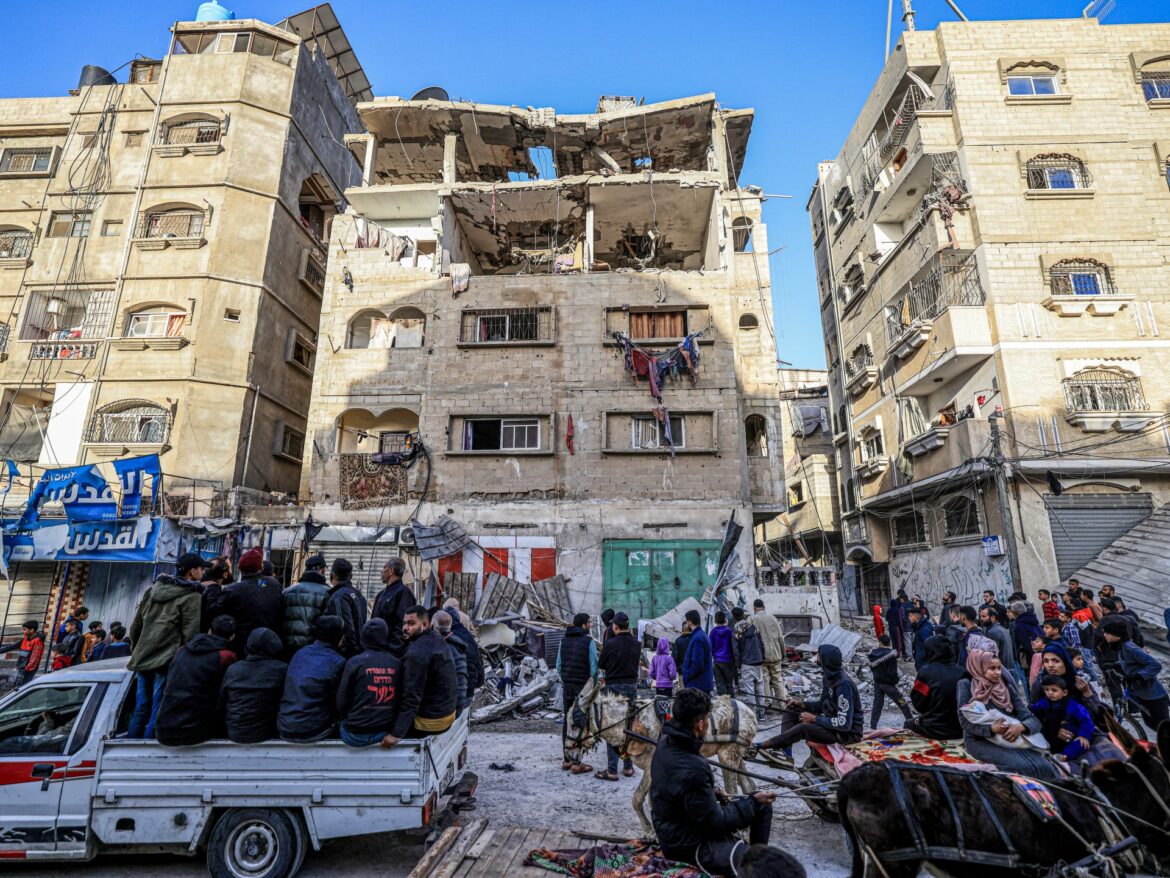The killings of civilians in Gaza are reaching a scale unprecedented in recent history, monitoring groups said, as Israel continues to pound the besieged coastal enclave more than three months after the start of the war.
British charity Oxfam said on Thursday that the daily Palestinian death toll in Israel’s war on Gaza exceeds that of any other major conflict in the 21st century, while survivors remain at high risk due to hunger, diseases and cold, as well as Israeli bombings.
“The Israeli army is killing Palestinians at an average rate of 250 people per day, far exceeding the daily toll in any other major conflict in recent years,” Oxfam said in a statement.
For comparison, the charity provided a list of average daily deaths in other conflicts since the turn of the century: 96.5 in Syria, 51.6 in Sudan, 50.8 in Iraq, 43.9 in Ukraine, 23.8 in Afghanistan and 15.8 in Yemen.
Oxfam said the crisis is further worsened by Israel’s restrictions on aid entry into Gaza, where only 10 percent of the weekly food aid needed enters. This poses a serious risk of starvation for those who survive the relentless bombardment, she said.
Also on Thursday, the US-based human rights organization Human Rights Watch (HRW) released its 2024 World Report, which said civilians in Gaza have been “targeted, attacked, abused and killed over the of the past year on a scale unprecedented in recent history. of Israel and Palestine.
‘War crimes’
At least 23,469 Palestinians have been killed and 59,604 injured in Israeli strikes on Gaza since October 7, according to the Gaza Health Ministry.
During the last 24-hour period, Israeli forces committed 10 massacres in the Gaza Strip, causing 112 deaths and 194 injuries, the ministry added. Around 7,000 people are still missing under the rubble and are presumed dead.
“The heinous crimes carried out by Israeli forces and Palestinian armed groups since October 7 are the heinous legacy of decades of impunity for illegal attacks and Israel’s systematic repression of Palestinians,” said Omar Shakir, Director Israel and Palestine at HRW.
“How many more civilians must suffer or be killed as a result of war crimes before arms-supplying countries pull the plug and take action to end these atrocities? He asked.
It comes as South Africa presented its case against Israel at the International Court of Justice in The Hague on Thursday, accusing the country of committing “genocide” against Palestinians in Gaza, an accusation that Israel’s prime minister Benjamin Netanyahu dismissed it as “hypocrisy and lies.” .
In its report, HRW noted that Israel’s war on Gaza included “acts of collective punishment that amount to war crimes and include the use of starvation as a method of warfare,” including the cutting of essential services. such as water and electricity and blocking the entrance. of the most crucial humanitarian aid.
Meanwhile, in the occupied West Bank, HRW said that in the first eight months of 2023, incidents of settler violence against Palestinians and their property reached the highest daily average since the United Nations began monitoring record this data in 2006. At least 3,291 Palestinians were detained in the occupied West Bank, HRW said. administrative detention without charge or trial, according to figures from the Israeli Prison Service.
“The Israeli authorities’ repression against Palestinians, undertaken as part of a policy aimed at maintaining the domination of Israeli Jews over Palestinians, amounts to crimes against humanity of apartheid and persecution,” HRW said.
“Gaza is different from space”
Experts in wartime damage mapping have also found that the war in Gaza is now among the deadliest and most destructive in recent history.
According to an analysis of data from the Copernicus Sentinel-1 satellite by the CUNY Graduate Center and Oregon State University, the war killed more civilians than the U.S.-led coalition during its three-year campaign against the ISIL (ISIS).
The offensive caused more destruction than the destruction of Aleppo in Syria between 2012 and 2016, that of Mariupol in Ukraine or, proportionately, than the Allied bombing of Germany during World War II, researchers have found. according to a report from the Associated Press.
The Israeli offensive likely damaged or destroyed more than two-thirds of all structures in northern Gaza and a quarter of the buildings in the southern area of Khan Younis, according to satellite data collected by the research group.
This includes tens of thousands of homes as well as schools, hospitals, mosques and shops. UN observers said around 70 percent of school buildings across Gaza were damaged.
“Gaza now has a different color than space. It’s a different texture,” said Corey Scher of the CUNY Graduate Center, who has worked to map destruction in several war zones.



